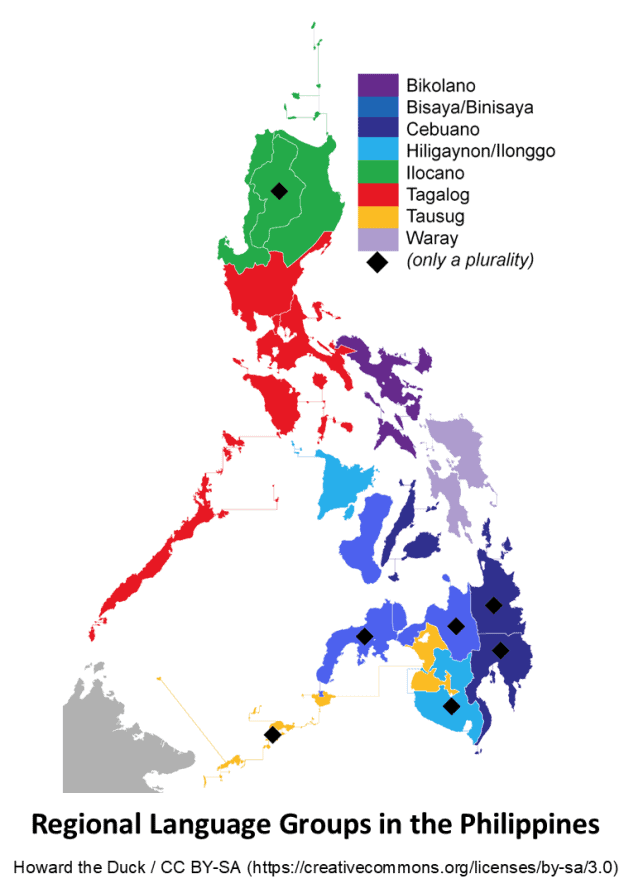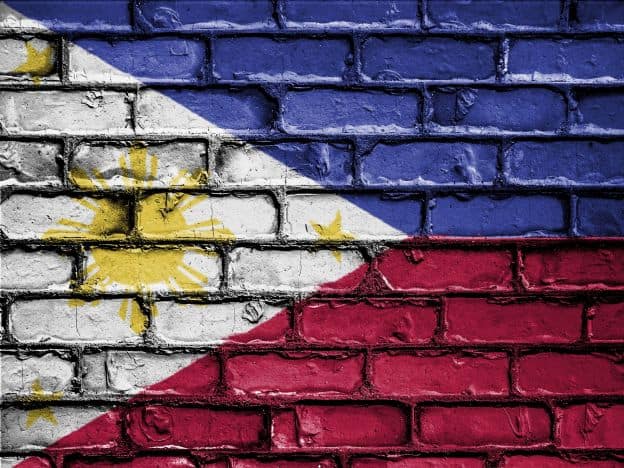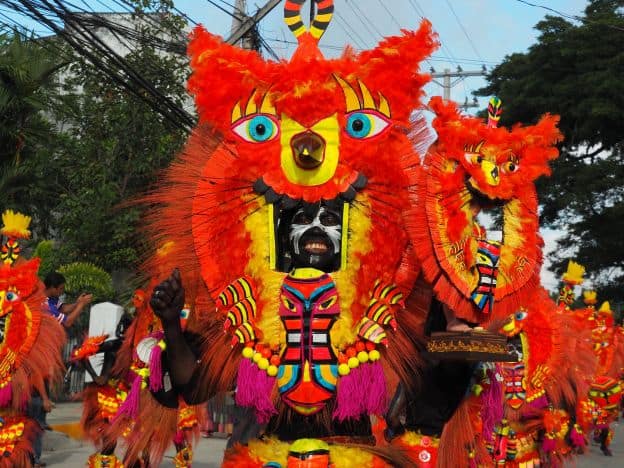Boracay? Palawan? Cebu? Adobo? Any of these sound familiar?
In the heart of Southeast Asia lies the Philippines, known for its breathtaking landscapes, from its pristine beaches with crystal-clear waters and vibrant coral reefs to its tropical rainforests, emerald rice terraces, and exotic wildlife. But beyond its scenery, the Philippines is a melting pot of traditions and flavors, with its diverse cultural heritage, vibrant and lively festivals, warm hospitality, and delicious food.
Nestled in over 7,000 islands of the Philippines lies a language as rich and diverse as the country itself: the Filipino language, Tagalog. As the national language of the Philippines, Tagalog not only serves as a cultural bridge connecting its people but also opens the door to understanding the country’s heart and soul.
In this article, we’ll explore the fascinating blend of English and Spanish influences on the language. Dive into learning Tagalog, and explore its grammar, vocabulary, and cultural significance through this comprehensive guide. Start learning Filipino today!


If you’ve ever visited the boondocks or feared getting cooties, you’ve used words of Tagalog (Filipino) origin.
“Boondock” derives from the Tagalog word bundok (mountain), and “cooties” comes from kuto, a Tagalog word meaning “lice.”
Admittedly, English hasn’t gotten a lot of loanwords from Tagalog.
The reverse, however, is not true. Tagalog has absorbed a significant percentage of its vocabulary from English — a fact that will be an enormous help to you as a learner of Tagalog.
One Language with Three Names
You may have seen the Tagalog language referred to as “Filipino,” or vice versa. Sometimes, you’ll even see references to something called “Pilipino.” In this post, we will use Tagalog and Filipino more or less interchangeably. What’s the correct name for the language?
A bit of history will help. Before Magellan arrived, the thousands of islands that would later become Las Islas Filipinas (the Philippine Islands) were ruled by many local chieftains.

The indigenous peoples of the archipelago established trade with several neighboring cultures, some of whom settled in this vast group of Pacific islands.
The Spanish colonial era spanned three centuries. It was immediately followed by the three-decade American colonial period. Finally, on the 4th of July in 1946, the Philippines gained complete independence.
The new nation was free of foreign rule for the first time in hundreds of years. Due to its colonial history, its borders had been defined by external forces. The now-autonomous nation comprised dozens of ethnic groups, speaking nearly two hundred languages.

The Evolution of the National Language
The new, independent Filipino government needed to create a strong national identity for all its people. A major part of establishing this identity would be deciding upon a national language.
When the Constitution of the newly formed Republic was ratified in 1935, Article XIII, Section 3 stated, “The National Assembly shall take steps toward the development and adoption of a common national language based on one of the existing native languages.”
As a major language in Manila and the National Capital Region, Tagalog — the language of the Tagalog ethnic group — was the primary candidate for a national language. By 1937, Tagalog had officially been declared the national language under Executive Order 134, issued by President Manuel Quezon.
The Advent of Pilipino
Naturally, the decision to make Tagalog the national language was not universally accepted. In 1959, the national language was rebranded as “Pilipino,” in an effort to make it more relatable for all Filipino citizens.
With the name “Pilipino,” the initial “F” sound of “Filipino” was replaced by a “P.” This choice harkened back to pre-colonial culture. The “P” was the closest sound to “F” in Baybayin, a pre-colonial Philippine alphabet. (Before the Spanish arrived, Baybayin had been the writing system used by several native languages, including Tagalog, Ilocano, and Bikol.)
During the 1950s and ‘60s, there was a trend toward linguistic “purism” in the Philippines. Efforts were made to replace foreign loanwords in Pilipino with Tagalog neologisms. An oft-cited example of this practice is salumpuwit, literally translated as “butt catcher” — or, more politely, “that which supports the buttocks.”
Native speakers of other languages still contested the choice of Tagalog as the basis for the national language. In 1963, the constitutionality of the national language selection was debated by the Philippine Supreme Court. The Court upheld the decision to base the national language on Tagalog.
Filipino: the National Language, Redefined

Throughout the 1970s, the national language debate continued. In Article XV, Section 3, Subsections 2 and 3 of the Amended 1973 Constitution, the call was put forth to develop a national language that would be more inclusive and better represent all Philippine people:
Section 3.
[…]2. The National Assembly shall take steps towards the development and formal adoption of a common national language to be known as Filipino.
3. Until otherwise provided by law, English and Pilipino shall be the official languages.
The 1987 Constitution of the Republic of the Philippines designates Filipino as the country’s national language. Filipino is also one of the official languages named in the Constitution, the other being English.
However, in this diverse country that’s home to nearly two hundred languages, Tagalog is not the only prominent language — despite its legal status as the “national” one. Statistics show that Tagalog (sometimes referred to just as Philipino) is spoken primarily in the National Capital Region. The farther you travel from the NCR, the more the country’s other regional languages and dialects dominate. Other major Filipino languages include Cebuano (Binisaya), Ilocano, and Bikol.
Tagalog has certainly gained an impressive number of speakers, though. Throughout the world, about 45 million people speak Tagalog, whether as a first or additional language. Tagalog, upon which Filipino is based, is the fifth-most spoken language in American homes.
Loanwords in Tagalog
Designed to be more diverse than the purist form of Pilipino, Filipino includes words from other Philippine languages besides Tagalog. Filipino also incorporates foreign loanwords, primarily from Spanish and English.
Other linguistic contributors to Filipino include:
- Sanskrit
- Chinese
- Arabic
- Tamil
- Nahuatl (Aztec-Mexican)
- Japanese
Tagalog Slang
Like any living language, Tagalog has its fair share of slang. You’ll catch a lot of it in audio and video resources, such as radio, television, music, and movies. Depending on the reading material you choose, you might also run across slang in Filipino books and magazines.
Some Filipino slang consists of words or syllables said in reverse, similar to Verlan in French. A lot of Filipino slang derives from loanwords that have been further modified.
An example of slang that’s a reversed loanword is lodi, which is the English word “idol” spelled backwards. Lodi can be used to describe extraordinary real-life characters; it’s also used to talk about celebrities like sports heroes or film stars.
Here are a few articles to get you started with understanding Filipino slang and casual speech:
● “15 Filipino Slang Words to Help You Speak Like a Local”
● “Filipino Idioms – 30 Examples of Commonly Used Tagalog Idiomatic Expressions”
● “Filipino Slang 2017: What does ‘lodi’ mean?” (includes “backwards” slang)
● “More Than 30 Tagalog Slang Words for Everyday Use”
● “11 Filipino Slang Words With Surprising Origins”
One important piece of Filipino slang that you’ll encounter often is Pinoy. Taken from the last four letters of “Filipino” and capped off with the Tagalog diminutive ending “y,” Pinoy can refer to virtually anything Filipino — music, movies, books, cooking, and especially the people. (Sometimes, you’ll see Pinay, which refers to Filipinas.) Interestingly enough, Pinoy is not used to describe the Filipino language itself.

How to Learn Tagalog: Hacking Tagalog for English Speakers
Here are a few facts that may make learning Tagalog just a little easier if you are a native English speaker. (Later on, for those who also speak some Spanish, we’ll look at more linguistic connections that will help you master Tagalog.)
Anglophone-Friendly Characteristics of Tagalog
These aspects of the Tagalog language make it somewhat easier for English speakers to grasp.
Easy as A, B, C: The Modern Tagalog Alphabet
Writing systems used in the Philippines have evolved over time, due to both cultural changes and attempts to make the alphabet better suit the language.
With the exception of the letters ñ and ng, Makabagong Alpabetong Filipino (the modern Filipino alphabet) exactly matches the letters and order of the English language alphabet:
| A | B | C | D | E | F | G | H | I | J | K | L | M | N |
| Ñ | NG | O | P | Q | R | S | T | U | V | W | X | Y | Z |
(The boldfaced letters are used mostly in Spanish and other foreign loanwords.)
One way to learn the sounds made by the Tagalog letters is to listen to sound clips of the letters being pronounced — especially the ones that sound different than their English counterparts.
This table shows the IPA equivalents for each Filipino letter sound, along with a pronunciation example from English.
If you ever need to spell a word in Filipino, you’re in luck — almost all of the letter names are the same in Filipino as in English. For example, let’s take CR. This stands for “comfort room,” which is another name for a no-frills public banyo (bathroom/restroom). In Filipino, CR is pronounced just like it would be in English. (Phonetically, it would sound like “see are.”)
Android users can try The Learn Filipino Alphabet Easily – Tagalog alphabet app, which has alphabet sounds pronounced by a native speaker. Apple has the Filipino alphabet for students app — complete with simple illustrations, word examples and translations, IPA representations, and an audio clip for each letter. This iOS app only covers Abakada (the older, 20-letter version of the Tagalog alphabet, without non-native letters such as C, Z, Ñ, or Q).
Abakada can be a good start, but you’ll want all 28 letters of the modern alphabet to properly spell loanwords in Filipino.
Consistent Pronunciation
In English, the pronunciation of certain letters and letter combinations varies depending on the word. Think about combinations like “ou,” which is pronounced differently in each of the following words: “thou,” “though,” “through,” and “disastrous.”

In Filipino, letters are pronounced much more consistently. Once English speakers learn how to properly pronounce Filipino vowels, as well as the Filipino letter ng, they should be able to confidently tackle the pronunciation of new Filipino words.
Words without Accent Marks
Not having to worry about accent marks is a relief for most native English speakers. In general, written Filipino doesn’t use accent marks, also known as diacriticals.
There are two notable exceptions:
● Words spelled with the letter ñ, which will generally be loanwords from Spanish, will include the tilde in their spelling.
● Accent marks are often used for instructional purposes, showing learners where to put the syllable stress in a Filipino word.
Syllable stress is something you probably don’t even think about when you’re speaking your native language — unless you hear someone using the wrong stress. This can make a familiar word sound strange to your ears.
When you’re learning new words in Filipino and you haven’t mastered the rules for syllable stress yet, these accent marks help you to stress words correctly. Correct stress makes your pronunciation more understandable to native speakers.
Gender-Free Nouns and Adjectives
Unlike numerous Indo-European languages, such as French, Spanish, and German, Filipino eschews the concept of grammatical gender. You won’t need to memorize Filipino nouns as masculine, feminine, or neuter.
Along with gender-free nouns, Filipino also frees you from making noun-adjective agreement. When talking about qualities such as size, emotional state, color, or height, there’s no need to worry about matching the adjectives to the gender and/or number of what you’re describing.

Simple Plurals
Even in English, nouns change when they become plural. Usually, we just add an “s” to the end of a singular noun — so “word” can become “words,” “language” can become “languages,” etc. There are many exceptions, such as “child” becoming “children” or “tooth” becoming “teeth.”
Filipino makes the process of creating plural nouns easy: Rather than changing anything about the noun itself, you simply place the word mga before the noun you want to make plural.
So, for example, anak (child) becomes mga anak (children) and ngipin (tooth) becomes mga ngipin (teeth).
The Magic of Mag
The prefix mag- magically transforms Filipino nouns into verbs. It can be used in front of Filipino/Tagalog words in Filipino, as well as foreign loanwords.
If you know the name of something in Filipino but don’t yet know the associated verb, you can use mag- to “do” the noun.
For instance, if you wanted to say, “to play guitar,” you’d start with gitara (guitar), then add mag-. So, mag-gitara would mean “to play guitar.”
English Loanwords in Filipino
English is a major source of loanwords in the Filipino language, which is helpful for anglophones trying to learn Filipino.
Filipino tech terms are often English loanwords. For instance, Filipino uses the word “computer,” although it’s spelled compyuter or kompyuter. Filipino also uses the word “video,” sometimes rendering it bidyo.

Some traditional Tagalog words have been largely superseded by an Anglicized term: lider (leader) is often used instead of pinuno; miting (meeting) replaces pulong; madyik (magic) fills in for salamangka.
Here are a few other examples of English words used in Filipino, many with Filipino spellings and shortened forms:
| English | Filipino |
| cake | keyk |
| bag | bag |
| internet | internet |
| low battery | lobat |
| missed call | miskol |
| carrot | karot |
| nurse | nars |
| plastic | plastik |
| chemical | kemikal |
| tissue | tisyu |
| cabinet | kabinet |
| magazine | magasin |
Taglish
Like Spanglish and Franglais, Taglish is a combination of English and another language. In this case, it’s English intermixed with Tagalog. Taglish is used primarily in the National Capital Region.

Taglish is considered code-switching, meaning that the speaker switches back and forth repeatedly between Tagalog and English phrases in the course of a single conversation. This goes well beyond sprinkling in a few English loanwords. Taglish is more like a 50/50 mix between English and Tagalog.
There is a social element to the use of Taglish. It’s often used by well-to-do young people, or by poseurs trying to sound wealthy.
In a backlash against English social dominance and societal stratification, Taglish was banned in Filipino schools as far back as the late 1980s. Four decades later, it’s become an indelible part of the culture and is even the subject of scholarly papers and entire books.
If you’re trying out your Filipino around someone who speaks Taglish, you can probably get away with substituting some English words for the Filipino you haven’t yet learned.
One caveat, though: Some words that we use in North American English can have totally different meanings in Philippine English. Seemingly innocent words can take on unexpected and even puzzling connotations.
A Few Notes of Caution
Filipino’s similarities to English and extensive use of English loanwords can give you a jumpstart in learning the language. That said, there are numerous differences to note.
Here are a few potential stumbling blocks for anglophone learners of Filipino. You’ll probably find other challenges as you progress in your Filipino learning.
With practice and exposure to the many resources we’ll explore, these differences will become second nature to you as a Filipino speaker.
Vowel Pronunciation within Words
English is full of diphthongs, wherein two vowels together combine to make a unique sound. Filipino vowels work differently than English.
When pronouncing Filipino vowels, remember that each vowel is pronounced separately. For instance: paalam, the word for “goodbye,” is pronounced with three syllables — pa – a – lam. The slight pause between the second and third letters of the word is called a glottal stop.
We have the glottal stop in English, quite often in British English. In the case of English, it usually appears in place of the letter t, in words such as “little.”
In Filipino, the glottal stop separates the sounds of two vowels that are side-by-side in a word. Oo, which means “yes,” is pronounced something like “oh-oh” … and definitely not like “eww” in English.

Word Alchemy: Prefixes, Suffixes, and Infixes in Filipino
Way back in elementary school, you probably learned about prefixes and suffixes: Little “helper” parts that can be added to words to change their meaning in some way, or to make them into different parts of speech. For example, the adjective “rapid” becomes an adverb (rapidly) with the addition of the suffix “-ly.”
Collectively, suffixes and prefixes are called “affixes.”
Filipino has its own set of affixes, which include infixes (elements added inside the body of a word, rather than to the end or the beginning).
We mentioned the magic of mag earlier. Mag is one of the more straightforward Filipino affixes.
Filipino has detailed rules for using mga panlapi (affixes) such as pang, mala, um, and pa. In addition to changing a word’s part of speech, mga panlapi can also emphasize important words in a sentence or specify a verb tense.
These rules can get complicated, especially when you’re first learning the language. However, it’s worth studying them, because they’re used all the time and can greatly influence the meaning of a word or phrase.
Filipino Verb Conjugation
First, the good news: Filipino verbs are not conjugated for each pronoun. In other words, you won’t need to memorize the Filipino equivalent of “I walk, you walk, he/she walks, we walk, they walk.”
Now, for the more complicated news: Filipino verbs do change … quite a bit. You can’t just use the root/infinitive and be done with it. In Filipino, various affixes (suffixes and prefixes) are added to verb roots. These affixes can indicate tense (past, present, or future), or whether the verb is being used as a command (imperative).
There isn’t a single set of affixes to indicate all of these conditions, either. There are several different classes or groups of Filipino verbs, named for the affixes they use for their future tense and imperative: There are mag verbs such as linis (to clean), tago (to hide), and basa (to read). Then there are ma verbs, such as tulog (to sleep), lito (to confuse), and nood (to watch). There are also in verbs, um verbs, i verbs, and “o to u” verbs.

As you can see from the examples of mag and ma verbs we’ve used, there are no set patterns to distinguish one verb group from another. You’ll need to commit these verbs and their conjugations to memory.
Precy Anza, who speaks both Filipino and Ilocano, does Filipino learners a great service with her article on conjugating Filipino verbs. Precy’s detailed explanations will familiarize you with the mysteries of Filipino verbs. Conjugation tables with numerous examples further clarify usage, so you can generate action-filled Filipino sentences of your own.
If Filipino verbs seem daunting, take heart: At least you can dispense with the verb “to be.” As stated in an online Tagalog Dictionary, “There is no real verb ‘to be’ in Tagalog.” That’s why you’ll see Filipino constructions like Matalino ang babae (literally, “Intelligent the woman”) or Gutom ang lalaki (literally, “Hungry the man”).
Word Order in Sentences
As an English speaker, you’re used to a subject-verb-object word order in most sentences. For example: In English, you’d say, “I drink coffee.” In Filipino, you’d put the verb at the front of the sentence, so it would be (literally) “Drink I (of) coffee,” or Umiinom ako ng kape in Filipino. (The word umiinom means “(to) drink”; ako is the pronoun for “I”; ng is the preposition “of”; kape is “coffee.”)
This typical Filipino word order pattern is followed in other languages such as Arabic, Irish Gaelic, Scottish Gaelic, Welsh, Biblical Hebrew, and Breton.
Other word orders can be used in Filipino, but verb-subject-object is the most common. It’s very different from what you’re used to as an English speaker, though, so it can be a bit of a stumbling block at first.
The Spanish-Filipino Language Connection
And now, back to some good news: If you already know some Spanish, you can learn Filipino words even more quickly. Not surprisingly, given the length of Spanish colonial rule, Tagalog — on which Filipino is based —absorbed up to forty percent of its contemporary vocabulary from Spanish.
Filipino Spelling of Spanish Words
Despite the inclusion of letters such as Q and Ñ in the modern Filipino alphabet, Filipino spelling of Spanish loanwords often substitutes ke for “que,” ly for “ll,” ny for “ñ,” and h for “j,” among other adaptations. This article from Shelly Dimaculangan’s travel blog will help you make the mental transition from Spanish to Filipino spelling. Shelly is a native of the Philippines and a linguist by trade, so her explanations are right on the mark.
Spanish Loanwords in Filipino
Some Spanish words came into Tagalog without any changes. Both Tagalog and Spanish use the word sala to mean “living room,” the word mesa to mean “table,” and the word oso to mean “bear” (as in “Yogi.”)
Filipino names for the days of the week are extremely similar to their Spanish counterparts.
Kumusta?, an informal way to say “How are you?”, sounds very much like ¿Como está? in Spanish. Kuneho, the Filipino word for “rabbit,” is much like conejo, the Spanish word for “rabbit.”

A good number of Filipino verbs came from Spanish. Most of them retained their original Spanish meanings, although there are some exceptions.
Spanish loanwords were interwoven with native Tagalog words to form uniquely Filipino terms such as leong-dagat for “sea lion” and kabayong-dagat for “sea horse.”
Filipino Language Sites
Filipino websites and other media can help you practice what you learn through Filipino language courses and learning apps. Websites and blogs put your language learning in a larger context, helping you better understand the language as it’s used in daily life.
Both beginners and intermediate students will benefit from the informative content on the Tagalog Lang, Learn Tagalog, Learning Filipino sites.
The blog on FilipinoPod101 features interesting posts on Filipino language, history, and culture.

Another standout is Precy Anza’s blog. With a lively style, Precy clearly explains Filipino vocabulary and grammar. She includes rich cultural context so you can better understand how to use your lessons. Find more of her Filipino language-learning posts on HubPages.
Filipino Language Q&A: Answering your Tagalog Learning Questions
Learning a living language is messy. Even if you find a solid curriculum to study, and round it out with supplementary resources, you’ll still encounter aspects of the language that make little sense.
For all of those nagging questions about real-life Filipino usage, look to online forums to get answers from fluent or native speakers.
Although language Q&A platform HiNative doesn’t cover Filipino, the discussion website Reddit takes up the mantle.
Beginners and intermediate learners can find answers on the r/Tagalog subreddit. The r/FilipinoLang subreddit is more suitable for intermediate/advanced learners since the content is primarily Filipino.
Similarly, the discussion site Quora has spaces where knowledgeable speakers field questions about Filipino. The Filipino (language) space and the Tagalog (language) space are home to numerous discussions of Filipino vocabulary, grammar, and usage.
How to Speak Tagalog
To get more Tagalog speaking practice, it’s a good idea to join Tagalog Language Communities. This involves engaging with online forums, social media groups, or local communities where people are learning or speaking Tagalog. This provides additional support, resources, and opportunities for practice.
What’s the Best Way to Learn Tagalog?
Immersion is often considered the best way to learn Tagalog, as it provides a holistic experience that goes beyond traditional classroom settings. By surrounding oneself with the language in various contexts, such as through daily conversations, music, movies, and cultural exposure, learners not only acquire linguistic skills but also develop a deeper understanding of the cultural nuances and social dynamics embedded in the language. Immersion facilitates a more natural and intuitive learning process, allowing individuals to grasp the rhythm, intonation, and colloquial expressions inherent in Tagalog. Moreover, this approach helps learners adapt to real-life communication scenarios, enhancing their ability to think and respond in Tagalog without the constraints of rigid memorization. In essence, immersion enables a more authentic and comprehensive language acquisition experience, fostering both linguistic proficiency and cultural appreciation.
What’s the Easiest Way to Learn Tagalog?
Watching Tagalog movies and TV shows is an entertaining way to expose yourself to colloquial language, accents, and cultural nuances. Try to watch with subtitles initially, and gradually reduce reliance on them.
Language learning apps like Duolingo, Rosetta Stone, or Babbel often have Tagalog courses and are an easy way to learn. These apps provide structured lessons and interactive exercises, while being fun and making the learning experience seem easier.
How long does it take to learn Tagalog?
The time it takes to learn Tagalog varies for each individual depending on factors such as your previous language learning experience, the time you dedicate to studying, and your exposure to the language. The Foreign Service Institute classifies Tagalog as a Category 3 language, meaning that it takes around 1100 hours to gain fluency.
How to Learn Tagalog Fast
– Consider enrolling in a Tagalog language course. This can be online or in-person classes, depending on your preferences and availability. Working with a teacher means you can have feedback on your progress and you know where your focus needs to be in order to improve.
– Start with common phrases and basic vocabulary. This will help you in everyday conversations and build a foundation for more complex language learning.
– Consistency is key. Set aside dedicated time each day to practice Tagalog. Regular practice will help reinforce what you’ve learned.
– Find language exchange partners who are native Tagalog speakers wanting to learn your language. This can be done through language exchange websites or local meet-up groups.
– Use flashcards to memorize vocabulary and create mnemonic devices to remember words and phrases. This can make the learning process more engaging and effective.
– Start with simple books, articles, or online content in Tagalog. Reading will help you understand sentence structures and expand your vocabulary.
Where to Learn Tagalog: Filipino Media
Now that you’re armed with a foundation of Filipino language lessons and a slick lexicon of slang, you can further expand your linguistic horizons with an abundance of Filipino media.
These diverse media resources are your all-access pass to Filipino as it’s really written, spoken, and used by native speakers.
Filipino Books
Whether textbooks or novels, print or electronic, books are a rich resource for language learners.
Children’s Books, Bilingual Books, and Other Print Books
If you’re still a beginner, ease your way into Filipino reading practice with children’s books and bilingual books.
KidKiddos Books specializes in publishing children’s books in about two dozen languages, including Filipino. Their print books are available in both Filipino and English-Filipino versions. You can get free shipping if you order about seven titles.
Language Lizard offers several bilingual books for Filipino learners. These colorful books, with richly textured illustrations, include fairy tales from around the world, as well as original stories. You can buy some of them in sets.
Eastern Dawn Books has about two hundred Filipino children’s books, some of which are Filipino-English bilingual volumes.
The Kabayan Central Filipino Store offers a variety of print books in Tagalog, comprising both fiction and non-fiction.
eBooks
The KidKiddos children’s books website has a selection of Filipino ebooks. Each title has a bilingual (English-Filipino) version, as well as a version that’s only in Filipino.
Tagalog Ebooks aggregates Filipino ebooks from various online sources. Most of the website is bilingual: The English descriptions appear first, followed by the Filipino text. There are many categories of books listed, although there aren’t a lot of books in each category.

Project Gutenberg has over fifty Filipino tomes available. Since these are older works in the public domain, some of the language used can be a bit antiquated. These works are better for advanced learners, who can adapt to outmoded spellings and word usages. You can download them in a couple of different formats or just read them online with your web browser.
Textbooks
Amazon is a reliable source for both ebooks and print books. The site has several Filipino textbooks for learners.
One popular textbook choice is Elementary Tagalog: Tara, Mag-Tagalog Tayo! (Come On, Let's Speak Tagalog!). Its highly structured approach spells out the intricacies of grammar and sentence structure for beginners. The included audio helps with pronunciation.
Think in English and Speak in Tagalog Like a Filipino by B. Jocelyn Agoncillo Ramos will take you methodically through pronunciation, grammar, and other essentials of fluent Filipino. Tagalog for Beginners: An Introduction to Filipino, the National Language of the Philippines by Dr. Joi Barrios will also give you a great foundation in the language. This beginner’s book is reasonably priced and comes with audio. This particular text also features fill-in-the-blank exercises for the learner.Intermediate learners can continue their studies with the companion book, Intermediate Tagalog: Learn to Speak Fluent Tagalog (Filipino), the National Language of the Philippines. This intermediate book also comes with audio — although some comments in the reviews indicate that the audio is inaccessible in the Kindle version.

Grammar enthusiasts will cheer for Modern Tagalog: Grammatical Explanations and Exercises for Non-native Speakers by Teresita Ramos and Restituto Cena. Although this book was first published in 1990, new generations of learners are still finding value in its in-depth explanations of Filipino grammar. For logical-mathematical learners, who like understanding material in a systematic way, this book would be particularly valuable.
Borrowed Books
If you want to keep your costs down, a resource such as Hoopla Digital — often available for free through your local public library — loans out many of these same textbook titles at no cost, as audiobooks and ebooks.
Don’t have Hoopla? Your local library may be partnered with a similar service, such as Libby by Overdrive. Both services have matching apps, so you can enjoy the digital content on the go.
Filipino Newspapers
As you keep up with current events through Filipino newspapers, you’ll gain new vocabulary and learn more about the people who speak the language. Here are a few online Filipino-language newspapers and tabloids to get you started:
● Abante
● Bistado
● Hataw
Filipino Social Media
If social media is a regular part of your daily routine, try following a few accounts in Filipino. The official accounts of news outlets, such as @AbanteNews on Twitter, are more likely to avoid slang and poor grammar. More “proper” Filipino can be easier to understand for beginning and early intermediate learners.
As your grasp of the language grows and you have a better understanding of casual Filipino speech, look for accounts that match your personal interests.
You might consider microblogging about your Filipino learning journey on Instagram, TikTok, or another favorite platform. Invite comments from native Filipino speakers, who can clarify difficult concepts for you and engage you in written conversation practice.
Filipino Radio
One of the more reliable online players for Filipino content is Radio-Philippines.com. Stations from the National Capital Region are likely to broadcast in Filipino. A lot of the music tends to be in English, though, which is not helpful for learning Filipino.
Keep your ears open for Filipino-language songs by artists like Loisa Andalio or boy band The Juans. Even if a lot of the music on the radio is in English, you should get a good bit of Filipino language exposure through the announcements and advertisements.

Fans of indie music might particularly enjoy Jeepney Pinoy Radio, a streaming station that highlights up-and-coming Filipino artists. The station, named after a ubiquitous form of Philippine transportation, is based in Ontario, Canada. Because of its North American location, the advertisements are generally in English. However, the music is thoroughly Filipino.
Filipino Television and Movies
There are several options for watching Filipino television from outside the Philippines. Some of the programmings will be in English, but you should find a fair amount of Filipino fare.
Dish Network’s Filipino: GMA Pinoy package offers four Filipino television channels, plus a few Filipino radio stations.
If you have AT&T TV/DirecTV, you can add a Filipino television package to your existing service.
American cable TV provider Xfinity has a handful of Filipino channels as part of its International TV packages.
Spectrum cable TV also makes a few Filipino networks available to its customers.
At a modest price point, The Filipino Channel (TFC) can bring you streaming Filipino programming — independent of a specific cable or satellite provider. You can stream TFC to any device with internet access. Watch it on your television with an Apple Airplay, Google Chromecast, or Roku device.

Television streaming services Prime TV (from Amazon) and Netflix both offer a selection of Filipino television programs and movies. Netflix has the edge for greater selection of titles and better control over subtitles. Start by watching films with Filipino audio and English subtitles. As your mastery of Filipino improves, you can switch to Filipino subtitles … or turn them off completely.
To enhance your Filipino learning experience with Netflix, try the Language Learning with Netflix browser extension for Chrome. This tool will amp up the standard subtitles that Netflix offers. Hover on any individual Filipino word to see its direct translation in the dictionary of your choice. Access a transcript of the film or program you’re watching, so you can follow the plot better.
If you’re a classic film buff, check out these Filipino films of the 1930s through the 1980s, available in their entirety on Vimeo:
● 1939’s Tunay na Ina (Real Mother) by Octavio Silos — one of five Filipino films still extant from the World War II era
● 1948’s Pista Sa Nayon (Village Festival) by Manuel Silos
● 1952’s Aklat ng Buhay (Book of Life) by Lamberto V. Avellana
● 1956’s Puppy Love by Manuel Silos — an homage to American greaser films
● 1960’s Dahlia by writer-director Susana C. de Guzman
● 1980’s Aguila (subtitled in English) by writer-director Eddie Romero
Filipino Music
When you’re hunting for music in the Filipino language, a term you’ll see a lot is “OPM.” This originally stood for “Original Pilipino Music” but has now come to mean “Original Philippine Music” or “Original Pinoy Music.”
OPM can be your key to finding Filipino music that will aid your language studies.
A search for “Tagalog Songs” on YouTube will produce compilations from a good variety of eras and genres. While love songs and soft rock seem to be prevalent, you can even find Filipino reggae and Filipino hip-hop. Also look for the aforementioned “OPM” on YouTube, which will yield Filipino music from the past five decades through the present.
Similarly, searching for “OPM Filipino” on Spotify will get you dozens of Filipino music playlists. Try the same trick on Pandora, although you will get some search results that are unrelated.
Language learning site Tagalog.com has a page for Filipino music videos, accompanied by transcripts of the song lyrics and an online dictionary. In order to watch the videos or access the lyrics, you’ll need to create a free account on the site.

When it comes to learning Filipino, kung may tinanim, may aanihin (if you plant, you harvest.) Your perseverance will pay off in Filipino fluency and the reward of connecting with Filipino speakers across the world in their own language.

